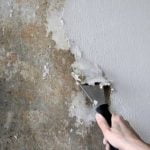Having a strong and reliable wireless internet signal at home is essential for smooth online activities such as streaming, gaming, and video conferencing. In this article, we will explore how to improve your wireless internet signal at home to ensure a seamless online experience. Whether you’re facing slow connection speeds or frequent disruptions, understanding the basics of Wi-Fi signals and optimizing your network setup can make a significant difference.
Wi-Fi signals work by transmitting data wirelessly between your devices and your router. However, common issues like signal interference or poor positioning of your router can impact the strength and stability of your connection. By assessing your current wireless setup and identifying potential problems, you can take steps to enhance the performance of your network. This includes positioning your router strategically to maximize signal strength and investing in newer technology to boost your signal.
In addition to optimizing the placement of your router and upgrading your equipment, it’s also crucial to minimize signal interference from other devices in your home. By exploring options for extending the reach of your Wi-Fi signal and fine-tuning your network settings for optimal performance, you can create a more reliable wireless internet connection. Stay tuned as we delve into practical tips and strategies for improving your wireless internet signal at home.
The Basics of Wi-Fi Signals
Wi-Fi signals play a crucial role in our daily lives, allowing us to stay connected to the internet wirelessly. Understanding how these signals work, common issues that may arise, and their impact on connection speed is essential in ensuring a reliable internet experience at home. By delving into the basics of Wi-Fi signals, we can better grasp how to improve our wireless internet signal for optimal performance.
How Wi-Fi Signals Work
Wi-Fi signals operate on radio frequencies, typically at 2.4 GHz or 5 GHz, to transmit data between your devices and router. These signals travel through the air and are susceptible to interference from obstacles like walls, electronic devices, and other wireless networks. The strength and stability of the signal can be affected by these factors, leading to dead zones or slow connection speeds in certain areas of your home.
Common Wi-Fi Signal Issues
Common issues that may affect Wi-Fi signal quality include network congestion from multiple devices connecting simultaneously, outdated hardware or firmware, and interference from neighboring networks or household appliances. Slow speeds, intermittent connections, and dropped signals are often symptoms of underlying problems with your wireless setup. Addressing these issues is key to improving your wireless internet signal at home.
The quality of your Wi-Fi signal directly impacts your connection speed, affecting how quickly you can browse the web, stream videos, and download files. A weak or unstable signal can result in buffering during online activities, frustrating delays when loading websites, and poor overall performance. By understanding the basics of Wi-Fi signals and their impact on connection speed, you can take steps to enhance your wireless network for a more seamless online experience.
Assessing Your Current Wireless Setup
When it comes to improving your wireless internet signal at home, one of the first steps you should take is to assess your current wireless setup. By identifying potential problems with your network, you can better understand what may be causing issues with your Wi-Fi signal strength.
One common issue that can affect the performance of your wireless network is the location of your router. If your router is tucked away in a corner or surrounded by walls and obstacles, it may struggle to transmit a strong signal throughout your home. To address this, consider positioning your router in a central location that is free from obstructions. This simple adjustment can make a significant difference in boosting your signal strength.
In addition to the physical placement of your router, you should also check for any outdated equipment that could be impacting your Wi-Fi signal. Older routers may not offer the same level of performance and range as newer models, so investing in an upgraded router can help improve your wireless internet signal at home.
By evaluating and addressing these potential issues within your current setup, you can take proactive steps towards enhancing the overall quality of your Wi-Fi connection.
Positioning Your Router for Optimal Signal Strength
A strong wireless internet signal is crucial for seamless online activities at home, whether it’s streaming movies, gaming, or working remotely. One of the key factors in boosting your Wi-Fi signal is optimizing the placement of your router.
By strategically positioning your router within your space, you can enhance the coverage and stability of your wireless network. Below are some tips on finding the best location for your router to improve your wireless internet signal at home:
- Centralize Your Router: Placing your router in a central location within your home can help ensure that the Wi-Fi signal reaches every corner of your space. Avoid placing it near walls or corners, as this can limit its range.
- Elevate Your Router: Positioning your router at an elevated position, such as on a shelf or mounted on a wall, can help improve its coverage by reducing obstructions like furniture or appliances that may block the signal.
- Keep It Away from Interference: To avoid signal interference from other devices like microwaves or cordless phones, keep your router away from such sources of potential disruption. Additionally, placing it away from metal objects can also help reduce interference.
By following these simple tips for positioning your router, you can significantly enhance the strength and reach of your wireless internet signal at home. This proactive step in optimizing your Wi-Fi setup can lead to faster connection speeds, smoother online experiences, and overall improved performance for all connected devices in your household.
Remember that even small adjustments in router placement can make a big difference in maximizing the potential of your wireless network and ensuring a reliable internet connection throughout your living space.
Upgrading Your Router and Equipment
One of the key factors to consider when upgrading your router is the Wi-Fi standard it supports. The latest standard, Wi-Fi 6 (802.11ax), offers better efficiency, higher data rates, increased capacity, and improved performance in crowded environments. Upgrading to a Wi-Fi 6 compatible router can future-proof your network and ensure optimal connectivity for years to come.
In addition to upgrading your router, consider investing in other equipment such as Wi-Fi extenders or mesh systems to further boost your signal coverage. These devices can help eliminate dead zones in your home by extending the reach of your wireless network. By strategically placing these extenders or mesh nodes throughout your space, you can create a seamless and reliable wireless experience in every corner of your home.
| Key Takeaways | Benefits |
|---|---|
| Upgrading to Wi-Fi 6 for improved efficiency | Faster speeds and better performance |
| Investing in Wi-Fi extenders or mesh systems | Elimination of dead zones and expanded coverage |
Avoiding Signal Interference
When it comes to improving your wireless internet signal at home, one of the key factors to consider is minimizing interference from other devices. Signal interference can significantly impact the strength and reliability of your Wi-Fi connection, leading to slow speeds and dropped connections. By implementing strategies to reduce interference, you can enhance the performance of your wireless network and enjoy a smoother online experience.
Here are some effective ways to avoid signal interference and optimize your wireless internet signal at home:
- Choose the right channel: Wi-Fi routers operate on different channels within the 2.4GHz and 5GHz frequency bands. By selecting a less congested channel, you can minimize interference from neighboring networks and improve your signal strength.
- Keep away from electronic devices: Appliances such as microwave ovens, cordless phones, and Bluetooth devices can interfere with Wi-Fi signals. Make sure to place your router away from these devices to reduce potential interference.
- Use Ethernet connections: For devices that require a strong and stable connection, consider using Ethernet cables instead of relying on Wi-Fi. This can help alleviate congestion on your wireless network and ensure a more reliable connection for certain devices.
By implementing these strategies, you can effectively minimize signal interference from other devices and enhance the performance of your wireless internet connection at home. Improving your Wi-Fi signal strength will not only provide faster speeds but also ensure a more reliable connection for all your online activities-from streaming HD videos to video conferencing and online gaming.
Extending Your Wi-Fi Range
Wi-Fi Range Extenders
Wi-Fi range extenders, also known as repeaters or boosters, are devices that can help amplify and extend the reach of your wireless signal. These devices pick up the existing Wi-Fi signal from your router and rebroadcast it to areas of your home where the signal is weak or non-existent.
By strategically placing range extenders throughout your home, you can effectively expand the coverage of your wireless network and eliminate dead zones. When considering a range extender, opt for one that is compatible with your current router and offers dual-band connectivity for optimal performance.
Powerline Adapters
Powerline adapters are another option for extending your Wi-Fi range, especially in areas where a traditional Wi-Fi signal may not reach. These adapters use your home’s electrical wiring to create a wired connection between your router and any room in your house.
Simply plug one adapter into an outlet near your router and connect it via Ethernet cable, then plug another adapter into an outlet in another room to bring internet connectivity to that location. This method can be particularly effective in multi-story homes or buildings with thick walls that interfere with wireless signals.
Mesh Wi-Fi Systems
Mesh Wi-Fi systems have become increasingly popular for homeowners looking to improve their wireless internet signal throughout their entire living space. These systems consist of multiple nodes that work together to create a seamless network with consistent coverage across all areas of your home.
Each node communicates with the others to provide strong, reliable connectivity no matter where you are. While mesh Wi-Fi systems come at a higher price point compared to traditional routers or extenders, they offer unmatched performance and convenience for those seeking a robust wireless network.
By exploring these options for extending your Wi-Fi range, you can significantly improve the reach and reliability of your wireless internet signal at home. Choose the solution that best fits your needs and budget, whether it’s through using range extenders, powerline adapters, or investing in a mesh Wi-Fi system. With a stronger wireless signal, you can enjoy faster speeds, smoother connections, and seamless browsing experience throughout every corner of your living space.
Fine-Tuning Your Network Settings
Another important factor to consider when fine-tuning your network settings is adjusting the transmit power of your router. By increasing or decreasing the transmit power, you can optimize the coverage area of your Wi-Fi signal.
It’s also recommended to update your router’s firmware regularly to ensure that you have access to the latest features and security patches. Additionally, enabling Quality of Service (QoS) settings on your router can prioritize bandwidth for specific devices or applications, improving overall network performance.
One effective way to fine-tune your network settings is by using tools such as inSSIDer or WiFi Analyzer to analyze your wireless environment and identify potential sources of interference. These tools can provide valuable insights into signal strength, channel utilization, and neighboring networks, allowing you to make informed decisions about optimizing your network configuration.
By implementing these strategies and being proactive about monitoring and adjusting your network settings, you can enjoy a faster and more reliable wireless internet connection at home.
| Network Optimization Tips | Details |
|---|---|
| Choose the right wireless channel | Reduce interference from other devices for better signal strength. |
| Adjust transmit power | Optimize coverage area of Wi-Fi signal by tweaking power levels. |
| Use QoS settings | Prioritize bandwidth for specific devices or applications for improved performance. |
Conclusion
In conclusion, having a strong wireless internet signal at home is essential for a smooth and reliable online experience. By implementing the tips and strategies discussed in this article on how to improve your wireless internet signal at home, you can greatly enhance the performance of your network.
Assessing your current setup, positioning your router correctly, upgrading to newer technology, minimizing interference, extending your Wi-Fi range, and fine-tuning your network settings are all crucial steps to ensure optimal signal strength. These adjustments not only improve connection speed but also reduce the likelihood of dropouts and buffering during online activities.
Ultimately, investing time and effort into improving your wireless internet signal at home will result in a more seamless browsing experience, faster downloads and uploads, smoother streaming of videos and music, and overall increased productivity. With a strong Wi-Fi signal, you can fully enjoy the benefits of being connected in today’s digital world.
Frequently Asked Questions
How Can I Boost My Wi-Fi Signal at Home?
You can boost your Wi-Fi signal at home by positioning your router in a central location, away from obstructions. Upgrading to a newer router, using Wi-Fi extenders, or adjusting the channel settings can also help improve signal strength.
Why Is My Wi-Fi Signal So Weak in My House?
A weak Wi-Fi signal in your house can be caused by factors such as distance from the router, interference from other electronic devices, thick walls or floors blocking the signal, or outdated equipment. Identifying and addressing these issues can help improve your Wi-Fi signal strength.
How Can I Increase My Wireless Wi-Fi Speed?
To increase your wireless Wi-Fi speed, you can start by ensuring that your router firmware is up to date and optimizing its settings. Using a wired connection for bandwidth-intensive activities like streaming or gaming, reducing the number of connected devices, or upgrading to a faster internet plan can also boost your Wi-Fi speed.

I’m thrilled to have you here as a part of the Remodeling Top community. This is where my journey as an architect and remodeling enthusiast intersects with your passion for transforming houses into dream homes.





